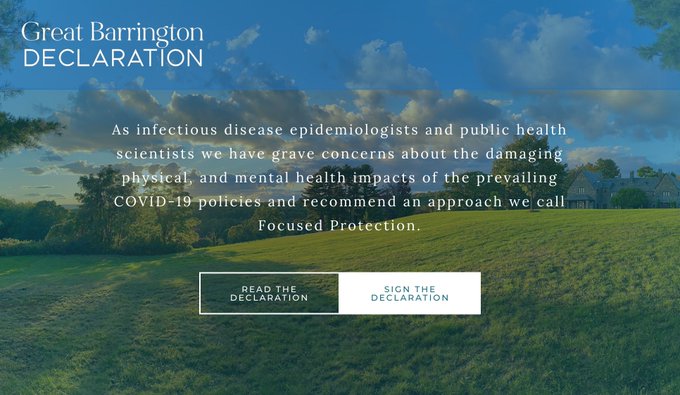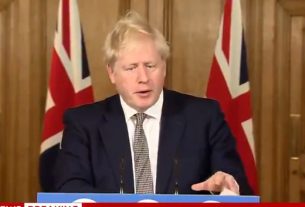With case numbers rising and governments balancing health and economic priorities, the number of scientists against lockdown is growing. Unlike in March, when medics and modellers across the globe advocated strict lockdowns to curb the spread of coronavirus, many now believe a different approach is necessary. The Great Barrington Declaration is an open letter penned by over 6,000 medics and scientists who believe the current restrictions in the US and UK are creating ‘irreparable damage.’ The letter calls on governments to shield the vulnerable using ‘focused protection’ while allowing the virus to spread among the general population aiming for herd immunity.
Arguing that the vast majority of the population is not in danger of dying from coronavirus, the signees of the letter have warned that the effects of social distancing on mental and emotional health are devastating. As a result, they advocate letting the non-susceptible population, namely those with no underlying health conditions and the young, get on with life while building strong supports for the elderly and for people who are immunocompromised.
The current restrictions, they point out, have created and will continue to create to “lower childhood vaccination rates, worsening cardiovascular disease outcomes, fewer cancer screenings, and deteriorating mental health – leading to greater excess mortality in years to come, with the working class and younger members of society carrying the heaviest burden.”
Seeing as scientists now know a lot more about COVID19 and have learned that only a small fraction of the global population is at serious risk, opting for a combination of herd immunity and better protection of the vulnerable is now desirable according to the signees. In the open letter and petition, these scientists introduce the concept of Focused Protection, meaning that shielding people who are at risk ought to be ‘the central aim of public health responses to COVID-19.’ The petition concludes:
“Those who are not vulnerable should immediately be allowed to resume life as normal. Simple hygiene measures, such as hand washing and staying home when sick should be practised by everyone to reduce the herd immunity threshold. Schools and universities should be open for in-person teaching. Extracurricular activities, such as sports, should be resumed. Young low-risk adults should work normally, rather than from home. Restaurants and other businesses should open. Arts, music, sport and other cultural activities should resume. People who are more at risk may participate if they wish, while society as a whole enjoys the protection conferred upon the vulnerable by those who have built up herd immunity.”
The declaration of the scientists against lockdown was published on the 4 October and has so far gathered the signatures of over 55,000 members of the public and more than 6,000 scientists and medics, including Dr Sunetra Gupta, Oxford University infectious diseases expert. But not everyone agrees. According to the Daily Mail, some doctors have pointed out that it is uncertain whether herd immunity is possible at all while also highlighting the long-term ill-effects of coronavirus in some patients.
New figures confirm a drop in death rates
The latest official figures suggest that hospitals and doctors are better equipped to treat COVID patients with fewer of them passing away. Although the number of people being treated in general wards and intensive care units this week has reached the same level as in March just before lockdown, the death rates are much lower. The figures indicate that the outcomes are much better. Whereas in March 6.3 per cent of those in hospital died, now the death rate lies at 1.3 per cent.




